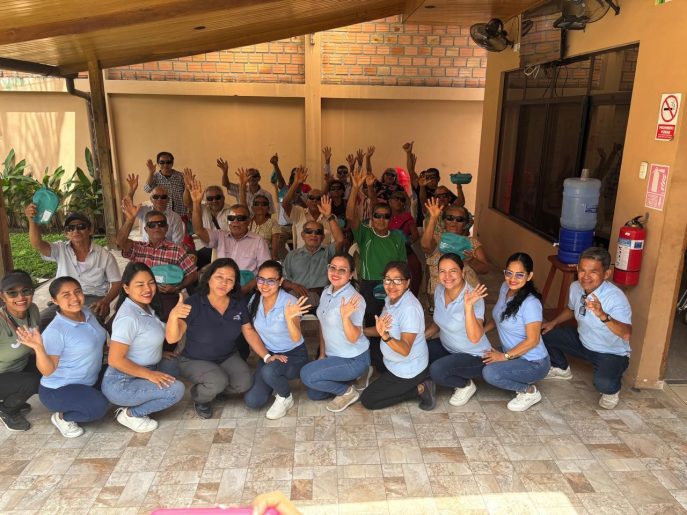By Gurleen Grewal
Since 1982, Seva Canada has restored sight and prevented blindness in developing countries. We train and support local partners to conduct eye-screening clinics in rural communities, provide access to high-quality surgeries that restore sight, and offer eyeglasses and medicine to those in need. When Seva Canada first began addressing preventable blindness, we did not know that access to eye care was in any way different for women and girls than it was for men and boys. In 2001, Dr. Paul Courtright, a Seva Canada Board Member, worked with Dr. Ken Bassett, Seva’s Program Director, and other colleagues to publish the finding that 2/3 of the world’s blind were women and girls. This was not due to any biological differences. It was the result of inequity in access to care.
Recognizing the moral and economic imperatives to improve access to eye care for women and girls, Seva Canada monitors and evaluates its programs to pinpoint strategies that can help reduce barriers to access. Meanwhile, they continue to ensure the same degree of access to eye care for men and boys. The most recent review Seva Canada undertook was published in 2019 in the peer-reviewed journal, Ophthalmic Epidemiology. The findings of this review are crucial to advancing evidence-based interventions that address gender inequity in blindness.
With a focus on low-middle-income countries, where the burden of preventable blindness is greatest, Seva Canada undertook a systematic review of interventions aimed at improving gender equity in access to eye care. Each of the studies included in this review provided sufficient data to assess how interventions affect men and women. This kind of disaggregate data is vital to illustrating gender differentials in access to eye care. The review also unpacks the word ‘access.’ It takes into account the complex series of steps that an individual must go through to access eye care services. The road to preventing blindness starts with “the perception of need and desire for health care.” It then goes on to “health care seeking … reaching … [and] utilization,” and it ends with “receiving appropriate care.” Each of these steps is a potential barrier to access that an intervention might combat. Depending on the local context, an individual in need of eye care might face any number of these barriers. For women and girls, who have “poorer access to health care services than men and boys”, the path to preventing blindness is riddled with obstacles.
In patriarchal societies, where social norms place men and boys in positions of power, “the relative social positions” of women and girls limit their ability to access eye care. For instance, in Tanzania, women are less able to get cataract surgery than men because men are perceived as being more important to the community and thus in greater need of sight, and women have “less say over household financial resources.” Interventions looking to improve gender equity in access to eye care might tackle a case like this with a gender-accommodating approach that “[works] around the barriers” of “entrenched gender norms and power relationships.” They can also use gender-transformative strategies that challenge patriarchal norms to build “more equitable relationships between women and men with the aim of improving health for all.” According to Seva’s systematic review, both types of strategies can help improve equity in access to care, leading to better eye health outcomes that restore sight for women and girls.
With the goal of documenting evidence-based strategies to reduce gender inequities in accessing eye care, Seva Canada’s systematic review of what interventions exist in the field today is invaluable. The production of knowledge in science is necessarily incremental. It relies on isolating variables and making sure that a cause and effect relationship is more than a hunch. Thus, Seva Canada’s systematic review offers a series of critical suggestions on how future research can strengthen the quality of evidence and advocate for effective interventions. For instance, one of the difficulties that remains is evaluating interventions for how they affect specific steps in accessing eye care, while also controlling for the many social and economic factors that might affect the process of accessing care. Another way to sharpen future research is to note whether and how interventions account for gender in their “design, implementation, and evaluation.” Such criticisms are key to laying the foundation and direction for future research efforts to clearly establish the links between intervention strategies and the reduction of gender inequity in blindness.
What the review ultimately puts forth is a call to action. It notes the lack of, and incredible need for, high-quality evidence through rigorous monitoring and evaluation efforts that are integrated into interventions. In other words, more research can help show what sorts of strategies prove most effective in boosting access to eye care for women and girls. It can guide future policy making and programme planning to reduce cases of preventable blindness, and promote the equal right to sight.



